Hinnerk Scheper
Hinnerk Scheper ( born 6 September 1897 in Wulften (Badbergen); district of Bersenbrück/Osnabrück, as 'Gerhard Hermann Heinrich Scheper; died 5 February 1957 in Berlin) was a German colour designer, mural painter, architectural colorist, non-fiction author, photographer, monument conservator, restorer, state curator and urban planner.
Hinnerk Scheper | |
|---|---|
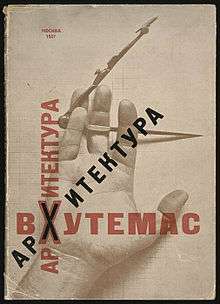 | |
| Born | Gerhard Hermann Heinrich,; September 6, 1897 Wulften (Badbergen), Germany |
| Died | February 5, 1957 Berlin, Germany |
| Resting place | Waldfriedhof Zehlendorf |
| Spouse(s) | Lou Scheper-Berkenkamp |
Life

Gerhard Hermann Heinrich was born on 6 September 1897 as son of Catherine Düne and stepfather master carpenter Hermann Gerhard Heinrich Scheper. His older brother was Hermann Scheper, who was born on 3 April 1842.[2][3]
At the age of 7 Hinnerk was enrolled in the Protestant Volksschule in Wulften in 1904. After finishing school in 1912, he began an apprenticeship as a painter with Gustav Nehmelmann. With the simultaneous attendance of a further education school in nearby Osnabrück, Hinnerk expanded his knowledge in the subjects drawing and mathematics. In 1915, after successful completion of his journeyman's examination, he found his first job in Quakenbrück with painter Rudolf Engel and in 1916 he worked in the post office in Badbergen, as his master received a military service obligation to a shipyard in Bremen. In the preceding period Hinnerk managed to sell two of his paintings he had painted himself and used the money to buy his first camera. He developed the photos in his self built darkroom.
The time at the Bauhaus
From 1918 to 1919 he attended the School of Arts and Crafts (majoring in photography) in Düsseldorf and Bremen. From 1919 to 1922 he studied at the Bauhaus in Weimar in the preliminary course of Johannes Itten and Paul Klee as well as mural painting with Itten and Oskar Schlemmer. Hinnerk Scheper passed his master examination as a painter. In the same year he married his fellow student Lou Berkenkamp. From 1922 to 1925 Scheper worked as a mural painter and colour designer, also for buildings in Weimar and Münster. From 1925, Scheper headed the workshop for mural painting at the Bauhaus in Dessau, succeeding Wassily Kandinsky, until the final closure of the Bauhaus by the National Socialists in 1933.[4][5]
The “Bauhaus Wallpaper”
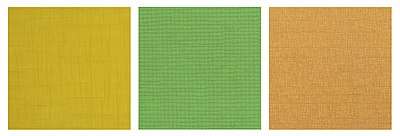
Under the leadership of director Hannes Meyer, who succeeded Walter Gropius on 1 April 1928, a group was appointed to develop designs for the Bauhaus Wallpaper Collection; they were Hinnerk Scheper, Ludwig Hilberseimer, Josef Albers and Joost Schmidt. Hinnerk organized a design competition for the wallpaper patterns among his students in the mural painting workshop.[6] Through Maria Rasch, sister of Emil Rasch, co-owner of the Wallpaper Factory Gebrüder Rasch in Bramsche, the production of the Bauhaus patterns was stimulated. The collection comprised 14 patterns, each with 5 to 15 colour variations, each with a structured, small-scale design that could be processed free of waste. After initial difficulties, the wallpaper became a complete economic success and through constant modernisation, the patterns also outlasted the Bauhaus closure up to today's Rasch range.[7]
"It gave us the opportunity to transfer a peculiar colour and a texture of the tinted surface that we developed from the plaster to the paper. In this way we were able to generalise and popularise our type of wall treatment and also our principle of interior design by means of mechanical reproduction to an industrial product that is accessible to all."
— Hinnerk Scheper Review 1955[8]
The Time in Moscow
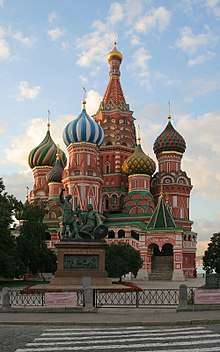
From 1929 to 1931, Scheper was on leave from the Bauhaus to work in Moscow, the Soviet Union capital to set up and manage a state consulting centre for colour design with associated teaching activities for the entire Soviet Union. Mrs Lou accompanied him to Moscow and supported him during this time. In addition, Scheper taught at the School of Design WChUTEIN’. At the same time he created photo series about people and architecture in the Soviet Union. His Russian colleague in the "Advisory Centre for Colour in Architecture and Cityscape" (Russian Maljarstroj) became Boris Ender, a student of Michail Matjuschin.[9][10] 1930 Erich Borchert followed his teacher and took over the leadership in the planning office Maljarstrojprojekt in 1931, as Hinnerk returned to Germany.[11] In addition, Scheper taught at the School of Design WChUTEIN'.
The Time of National Socialism
Together with his wife Scheper worked for various photo agencies in Berlin until 1932. After 1934 he was engaged in freelance artistic work, colour design and restoration work. In 1934 the National Socialists refused Hinnerk the membership in the "Reichsverband der Deutschen Presse" (Association of the German Press). From 1942 to 1945 Scheper did military service in Germany.[2]
After World War II
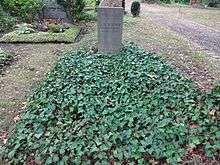
In 1945, the Berlin magistrate appointed him head of the Office for the Preservation of Monuments and Urban Planning and as State Conservator of Berlin. In the same year, he was one of the rescuers of the Neue Wache in Berlin, as was the architect and curator of monuments Selman Selmanagić in 1949.[12][13] During the division of Berlin, Scheper protested unsuccessfully against the eviction of the Berlin City Palacees by the German People's Police in October 1948.[14] The hopeless struggle against the demolition of the palace, which was being pursued by the East Berlin magistrate, caused him and the director of the Berlin Palace Department, Margarete Kühn to move their offices to West Berlin. In 1951, Hinnerk attracted attention as an expert witness in an expert commission consisting of Professor Richard Sedlmaier from Kiel, Professor Günther Grundmann and Dr. jur. Günter Scheefe from Hamburg. The commission unmasked the forgeries in the Marienkirche of Lübeck.[15][16] After the war, the "Bauhaus Wallpaper Collection" was relaunched in 1950/51, still in the same design of the 1930s. Hinnerk, like in the period up to the beginning of the war, remained responsible for its colour scheme. From 1952/53 the Rasch company modernised the collection and oriented itself towards Scandinavian designs. From 1952 Scheper held a teaching position for the preservation of historical monuments at the Technical University Berlin and from 1953 he held the title of Government Director.[17]
Hinnerk Scheper died on May 5, 1957 in Berlin. The couple's grave is in the forest cemetery Zehlendorf.
Family
On December 22, 1922 he married his wife Lou, née Hermine Luise Berkenkamp in the city church St. Peter and Paul in Weimar.
The following children resulted from the marriage:
- Jan Gisbert (* November 7, 1923)
- Britta (* 28 March 1926; † 14 January 2012)[18]
- Dirk (* August 21, 1938)
His daughter-in-law became the wife of son Dirk, Renate Scheper.[2]
Works
Highlights in Scheper's work in Dessau were his colour design and the colour coding system in the Bauhaus building/Dessau and the colour design of the masters' houses as well as that of the Dessau Törten settlement.[19] Among his most important colour designs in Moscow was the Einküchenhaus#Moscow 1928]-Narkomfin building by Ginsburg and Milinis.[20] Scheper carried out restoration measures at the castle [[Sacrow (Potsdam)Kammergericht], the Reich Forestry Office and Prinz-Albrecht-Palais in Berlin. "The reconstruction of Berlin, in particular the rescue and restoration of historical buildings, churches and palaces, remains closely associated with the name Hinnerk Scheper."[17]
- 1926 Design of the exhibition rooms in the Galerie Neue Kunst Fides in Dresden, for the exhibition by Paul Klee in June of the year.
- Design planning for a colour coding system in the Weimar Castle Museum
- Colour design for functional areas in the Folkwang Museum, Essen[21]
- 1945 Neue Wache in Berlin, rescued by starting restoration against Soviet demolition plans.
- From 1945 reconstruction of Schloss Charlottenburg, especially the built parts of Eosander from Göthe (1669 – 1728)[22]
- 1946 Hinberk Scheper has the equestrian statue of the Great Elector sunk in the Borsighafen Berlin Tegel. The sensational recovery followed in 1948 and, after restoration in 1951, it was repositioned, but no longer in its original place on the Kurfürstenbrücke, but in the Ehrenhof of Charlottenburg Palace. For the Senate in West Berlin, a transfer to the original location in East Berlin was out of the question, since by decision of the state leadership of the German Democratic Republic (GDR) the baroque Berlin Castle, in sight of the bridge, was simply blown up in September 1950 .[23][5]
- 1949 - 1955 Head of the restoration of the staircase in Schloss Glienicke and of Knobelsdorff Wing at Charlottenburg Palace and with restorer Erich Demmin[24]
- 1950-56 Reconstruction of the Luisenkirche (Berlin-Charlottenburg)[25]
- 1951 Statement against the art forger Lothar Malskat with his forgery in the St. Mary's Church, Lübeck. Sentencing of Malskat on January 25, 1955.[26]
- 1952-1957 Restoration of the Johanniskirche (Berlin), under the direction of the architects Otto Bartning and Professor Werry Roth (1885-1958) in the sense of Schinkels
- 1954 City curator Hinnerk has the figures of the Victory Alley buried in the park of the Schloss Bellevue under the strictest secrecy to protect them from the Allies and Communists. The Berliners called the Victory Alley their "doll's alley". With the consent of the [[Federal President (Germany)] of that time] Walter Scheel the figures were not excavated again until 1979 in the course of the action "Save the monuments".[27][28]
- Commitment to the preservation and careful reconstruction of the baroque Kammergericht's Berlin built (built 1734/1735)[29]
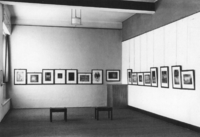 Gallery New Art Fides 1926
Gallery New Art Fides 1926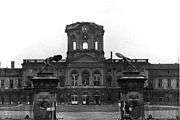 Charlottenburg Palace after the air raid of 22 November 1943
Charlottenburg Palace after the air raid of 22 November 1943 Equestrian statue of the Great Elector in the Court of Honour of Charlottenburg Palace Berlin
Equestrian statue of the Great Elector in the Court of Honour of Charlottenburg Palace Berlin- Victory Alley Berlin 1903, called "doll's Avenue" by the Berliners
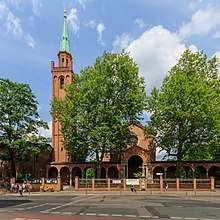 Johanniskirche in Berlin-Moabit (2017)
Johanniskirche in Berlin-Moabit (2017)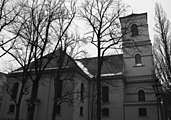 The Luisenkirche in Berlin Charlottenburg
The Luisenkirche in Berlin Charlottenburg- Schloss Charlottenburg: Knobelsdorff grand piano
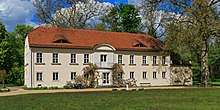 Sacrow Castle, Spring 2015
Sacrow Castle, Spring 2015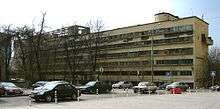 Narkomfin Building, Moscow 2007
Narkomfin Building, Moscow 2007
Own literary works - non-fiction
- Restaurieren und Berufsethos - (Article) Author: Hinnerk Scheper (Source: Deutsche Kunst und Denkmalpflege / hrsg. by d. Vereinigung der Landesdenkmalpfleger in der Bundesrepublik Deutschland. 1955, 109-111 Publisher: 1955).
- The Buildings and Art Monuments of Berlin, Tiergarten District - Author: Hinnerk Scheper Publisher: Berlin : Gebr. Mann Verlag, 1955. (Synagogue architecture. Synagogue architecture. - Germany - Berlin. Synagogues.)
- The buildings and art monuments of Berlin - Author: Hinnerk Scheper; Paul Ortwin Rave - Publisher: Berlin Gebr. Mann
- The Buildings and Art Monuments of Berlin - Im Auftr. d. Senats v. Berlin ed. by Hinnerk Scheper. Writer: Paul Ortwin Rave. From 3:] Im Auftr. d. Senators f. Bau- u. Wohnungswesen published by the Berlin State Conservator [sp.:] Amt. f. Preservation of Monuments. Author: Hinnerk Scheper Publisher: Berlin Gebr. Mann 1955.
- The buildings and art monuments of Berlin - Author: Hinnerk Scheper; Irmgard Wirth; Berlin (West). Senate. Publisher: Berlin : Mann, 1955 (introduced by Paul Ortwin Rave / commissioned by the Senate Berlin-West. Ed. by Hinnerk Scheper. edited by Irmgard Wirth.
- DIE BAUWERKE UND KUNSTDENKMÄLER VON BERLIN - magazine, magazine: Serien Verlag: Berlin Gebr. Mann
- (en) Scheper, Hinnerk, 1897-1957. artist file - Author: Hinnerk Scheper; Ingalls Library, (Manuscript material, Archival materials)
- Ten years of monument preservation in Berlin (article) - Author: Hinnerk Scheper (Source: Deutsche Kunst und Denkmalpflege / ed. by d. Vereinigung der Landesdenkmalpfleger in der Bundesrepublik Deutschland. 1957, 56-60 Publisher: 1957)
- Tafelband - Author: Paul Ortwin Rave; Hinnerk Scheper; Irmgard Wirth Verlag: Berlin : Gebr. Mann Verlag, 1961. (Charlottenburg, T. 2.; City and District of Charlottenburg / Writings and Insert: Paul Ortwin Rave. Edited by Irmgard Wirth, Tafelbd.; Buildings and Art Monuments of Berlin / ed. by the Senator for Urban Development and Environmental Protection, Landeskonservator, 2nd ed.)
- The Buildings and Monuments of Art of Berlin. 2], Charlottenburg - Author: Hinnerk Scheper; Berlin (West). Office for preservation of monuments.
- The buildings and art monuments of Berlin. [2] City and district of Charlottenburg : Tafelbd. - Author: Hinnerk Scheper Publisher: Berlin Mann 1961
- Text volume - Author: Margarete Kühn; Paul Ortwin Rave; Hinnerk Scheper Verlag: Berlin : Gebr. Mann Verlag, 1970 (Charlottenburg, T. 1.; Schloß Charlottenburg / edited by Margarete Kühn, text ibid.; Bauwerke und Kunstdenkmäler von Berlin / ed. by the Senator für Stadtentwicklung und Umweltschutz, Landeskonservator, 2nd ed.)
- The Buildings and Monuments of Art of Berlin. 3], District Kreuzberg - Author: Hinnerk Scheper; Berlin (West). Office for Monument Preservation. Publisher: Berlin Mann
- The buildings and art monuments of Berlin. 4] Kreuzberg District : Maps and Plans - Author: Hinnerk Scheper Publisher: Berlin Mann 1980
- The Kaiser Wilhelm Memorial Church : Origin and Significance - Author: Vera Frowein-Ziroff; Paul Ortwin Rave; Hinnerk Scheper Verlag: Berlin : Gebr. Mann Verlag, 1982 (Buildings and Art Monuments of Berlin / ed. by the Senator for Urban Development and Environmental Protection, State Conservator, Beih. 9.)
- Photo: Hinnerk Scheper : a Bauhäusler as photo journalist in Dessau (exhibition catalogue) - Author: Renate Scheper; Hinnerk Scheper Verlag: Dessau: Anhaltische Verl.-Ges., 1991.(Contributions to the city history, 13th ; Scheper, Hinnerk. Photography. Dessau 1991)
- Maps and plans - author: Manfred Hecker; Paul Ortwin Rave; Hinnerk Scheper (handwritten material, archival materials) Kreuzberg district / edited by Manfred Hecker, 4,1; Buildings and art monuments of Berlin / edited by the Senator for Urban Development and Environmental Protection, State Curator, 4th ed.)
- Hinnerk Scheper : colour designer, photographer, monument conservator influenced by the Bauhaus - Author: Hinnerk Scheper; Renate Scheper; Förderverein Meisterhäuser Dessau Verlag: Bramsche : Rasch, 2007 (Catalogue book for the exhibition in the Muche Masters' House in Dessau from 5 October to 25 November 2007, organised by the Förderverein Meisterhäuser Dessau e.V. with the support of the city of Dessau-Rosslau ; from 7 March to 18 May 2008, the exhibition will also be shown by the Förderkreis der Bauhaus-Universität Weimar e.V. in the Haus am Horn in Weimar)[30]
Literature
- Renate Scheper: "Photo: Hinnerk Scheper. A Bauhäusler as a photo journalist in Dessau. Anhaltische Verlags-Gesellschaft, Dessau 1991, ISBN 3-910192-11-4.
- Renate Scheper (Ed.): Hinnerk Scheper: Colour designer, photographer, monument conservator influenced by the Bauhaus. Rasch, Bramsche 2007, ISBN 978-3-89946-093-3.
Web links
Itemized statements (in German)
- Farbkreis (Color Wheel) nach Johannes Itten von (Alias) KagoBelcol youtube.com Farbkreis
- Children's and Youth Literature A Lexicon Published by Kurt Franz and Franz Josef Payrhuber on behalf of the German Academy for Children's and Youth Literature, Volkach Founded by Alfred Clemens Baumgärtner and Heinrich Pleticha. Co-edited by Günther Lange 1999 and 2015 (PDF on kinderbuchforschung-murken.de Lou and Hinnerk Scheper) Lou and Hinnerk Scheper pdf view p. 4 and 5.
- Landesarchiv Thüringen - Hauptstaatsarchiv Weimar, Staatliches Bauhaus Weimar, No. 146 1920 self-written curriculum vitae of Hermann Scheper p. 205
- Bersenbrücker Kreisblatt Also a Badberger influenced the Bauhaus Memories of Hinnerk Scheper and his work at the art school in Weimar Article 22 October 2019 by Alexandra Lüders Hinnerk Scheper his wife Lou
- Bersenbrucker Kreisblatt Also a Badbergershaped the Bauhaus, Memories of Hinnerk Scheper and his work at the art school in Weimar 22 October 2019 By Alexandra Lüders Hinnerk Scheper his wife Lou. 22 Oktober 2019 Von Alexandra Lüders Hinnerk Scheper seine Frau Lou.Als Konservator
- With subversive glamour: Max Bill and his time. 1908-1939 Angela Thomas Verlag Scheidegger & Spiess, 2008 - 575 pages S. 184 (restricted view)
- Hanna Elisabeth Koch: "Beauty has a new meaning today" - On West German design of the 1950s using the example of the wallpaper industry, 2014, dissertation, p. 22 and p. 25 (PDF)
- BauhausArchive Museum of Design The Bauhaus Collection (virtual) Murals
- Scientific journal of the Weimar College of Architecture and Construction 26th year 1 1979 1 issue 4/5 Larissa A. Shadowa hinnerk Scheper and Boris Ender in Maljarstroj (PDF)
- Germans in Russia and the Soviet Union 1914-1941 published by Alfred Eisfeld, Victor Herdt, Boris Meissner Lit Verlag Dr. W. Hopf Berlin 2007 p. 356
- bauhaus.de/en/bauhaus-archiv/2446_schenkungen/2448_erich_borchert/ Erich Borchert
- Memories of Kurt Reutti (1900-1967), a German sculptor and art collector LII. Die Neue Wache DFG-Viewer p. 355-361
- Die Bauwerke und Kunstdenkmäler von Berlin Supplement 40 (PDF) p. 9 Preface
- Although an official commission had declared it not to be in danger of collapsing the day before. One of Scheper's departments in the castle was also affected. For this and the following see Renate Petras: The Palace in Berlin. From the revolution of 1918 to the destruction in 1950 Verlag für Bauwesen, Berlin/ München 1992, p. 108f.
- Kunstchronik, Volume 5H. Carl, 1952 p. 325 (restricted view)
- The paintings in the choir of the Marienkirche in Lübeck Restoration or forgery by Günther Grundmann and Richard Sedlmaier on journals. ub.uni-heidelberg.de (pdf view) pp. 324 to 331
- Leaflet on the exhibition in the 'Haus am Horn', Hinnerk Scheper - colour designer, photographer, monument conservator. Quoted after Michael Siebenbrodt.
- On waz.trauer.de - Created by Funke Mediengruppe Created on 14 January 2012 Britta Schöne-Warnefeld née Scheper
- bauhaus100 www.bauhaus100.de Farbleitsysteme und Farbpläne Bauhaus Dessau
- Classical architectural sketches November 10, 2017 - Hinnerk Scheper - color design for Department F of the Narcomfin Building (Moisei Ginzburg and Ignaty Milinis, 1928-1932), Moscow, Russia, 1929. on www.facebook.com (SPAN) BocetosClasicosDeArquitectura Hinnerk Scheper Farbdesign
- Unique treasure in the Berlin Bauhaus Archive Scheper estate Unique treasure in the Berlin Bauhaus Archive Hinnerk and Lou Scheper
- MITELINUNGEN DES VEREINS FÜR DIE GESCHICHTE BERLINS FOUNDED 1865 Years 1965 - 1970 Editorial: 1965 - 1967 Dr. Joachim Lachmann 1968 - 1970 Prof. Dr. Dr. Dr. Walter Hoffmann-Axthelm and Dr. Hans E. Pappenheim BERLIN p.281 (PDF)
- Berlin Berlin in history and presentGebr. Mann Verlag, 1996 p. 68 (restricted view)
- Who was who in Mecklenburg and Vorpommern: The encyclopedia of persons by Grete Grewolls 2026 Demmin, Erich
- Charlottenburg-Wilmersdorf District Office Evangelical Luisenkirche
- Building and architectural history, urban development in Lübeck Literature references and quotations by Hans Maier at Marien Kirche: F: p. 15
- Monuments and memorial stones for Frederick the Great: Farewell... by René Du Bois pp. 42 - 43
- Berlin in history and present Gebr. Mann Verlag, 1996 S. 53 S. 67 und S. 68 (eingeschränkte Ansicht)
- COMMUNICATIONS OF THE ASSOCIATION FOR THE HISTORY OF BERLIN FOUNDED 1865 Years 1965 - 1970 Editorial: 1965 - 1967 Dr. Joachim Lachmann 1968 - 1970 Prof. Dr. Dr. Dr. Walter Hoffmann-Axthelm and Dr. Hans E. Pappenheim BERLIN p.82 (PDF)
- WORLDCAT- worldcat.org Works, articles and magazines by Hinnerk Scheper